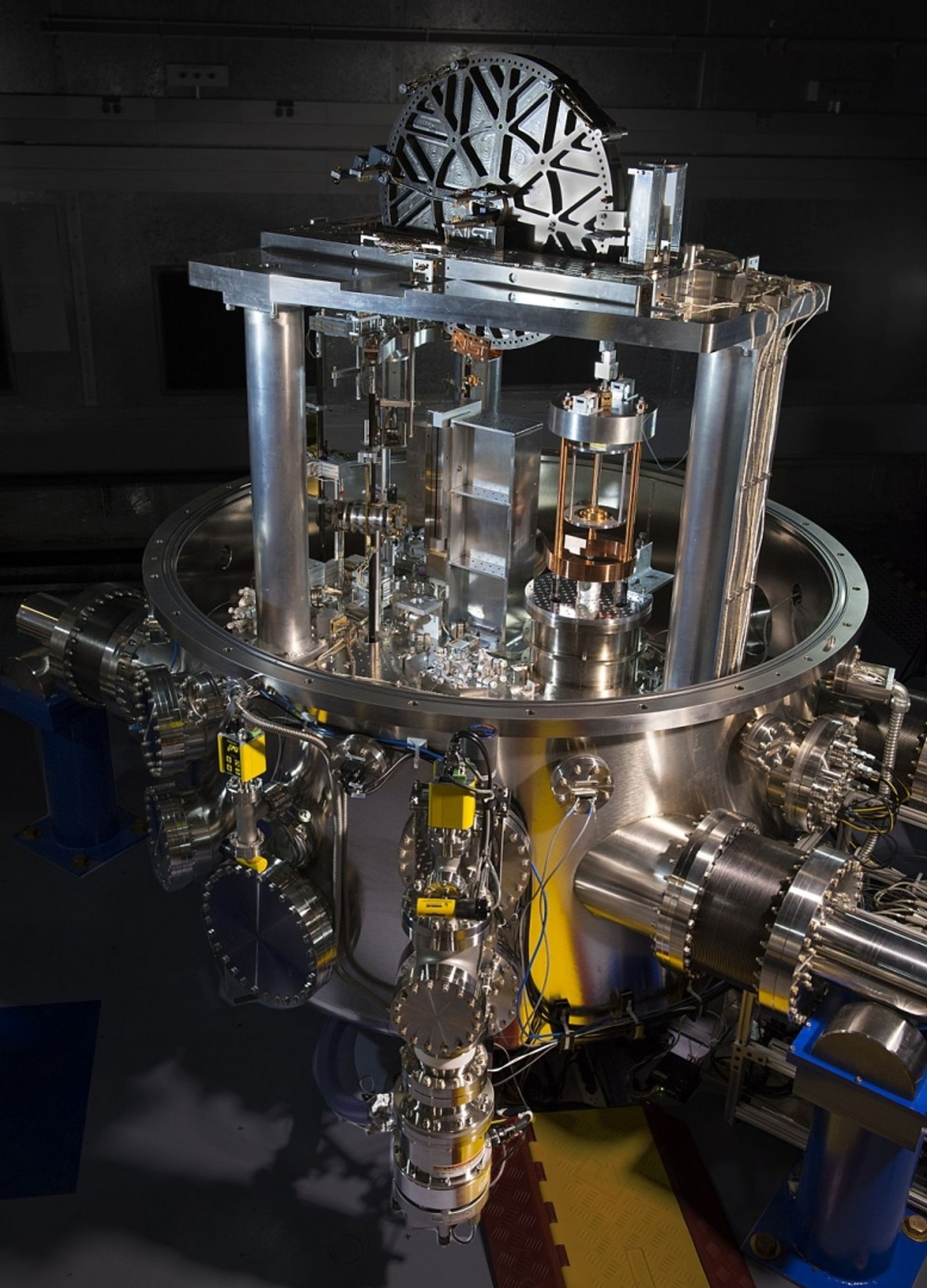Kilogram Redefined
The National Institute of Standards and Technology’s Kibble balance. Credit: J.L.Lee/NIST
Together with six other units – meter, second, ampere, kelvin, mole, and candela – the kilogram, a unit of mass, is part of the International System of Units (SI) that is used as a basis to express every measurable object or phenomenon in nature in numbers.
How did scientists come up with these SI units? What exactly does a single SI unit mean? Well, the kilogram (nicknamed Le Grand K) is the platinum and iridium cylinder in a high-security vault outside Paris. And an imaginary experiment involving the force between two infinite wires defines the ampere, the unit of electrical current. The mole is the amount of substance in a system with as many elementary entities as there are atoms in 0.012 kilograms of carbon-12, the most prevalent isotope of carbon. The kelvin relates to the temperature and pressure at which water, ice, and water vapor coexist in equilibrium, known as the triple point of water.
For decades, scientists have strived to retire “Le Grand K”. After all, using the 19th-century artifact-defined concept in the 21st-century is like trying to get to Mars on a rocket powered by a steam engine. It just isn't going to work. On top of that, the current standard kilogram is losing weight. About 50 micrograms, at the latest check. Enough to be different from its once identical copies stored in laboratories around the world. To solve this weight(y) problem, scientists have been looking for a new definition of the kilogram.
Scientists have been experimenting and collecting data needed to replace the cylinder with a definition based on mathematical constants.
One method, led by an international team known as the Avogadro Project, entails counting the atoms in a silicon-28 sphere that weighs the same as the reference kilogram.
The second method involves a sort of scale known as a Kibble balance, named after the renowned physicist and metrologist Bryan Kibble. Instead of balancing the scale with weights, scientists used electromagnetism. An electrical current is sent through a coiled wire, generating a magnetic field that creates the upward force needed to balance the scale. Scientists can figure out the strength of that field by pulling on the coil. If you know the voltage, the current and the velocity at which the coil was pulled, you can calculate the Planck constant with extreme precision.
In 2014, at the quadrennial General Conference on Weights and Measures, the scientific community resolved to redefine the kilogram based on Planck's constant, a value from quantum mechanics that describes the packets energy comes in. If physicists could get a good enough measure of Planck's constant, the committee would base a kilogram on that value.
On June 30, the day before the deadline to submit a value to the weights and measures committee, the team at the National Institute of Standards and Technology (NIST) was finally ready to release its result. Based on 16 months' worth of measurements, it calculated Planck's constant to be 6.626069934 x 10−34 kg∙m2/s.
Don't be alarmed by this small, strange number. The most important thing about the NIST measurement isn't so much the number (though that's also a big deal) as the uncertainty: just 13 parts per billion. This means that the NIST scientists think their measurement of Planck's constant is within 0.0000013 percent of the correct number.
In the end, the scientific community rejoiced, because the quest to redefine the iconic SI unit has reached its goal.
How We're Redefining the kg. Credit: Veritasium
Source: CERN









